Trophy office blocks designed as landmarks are not welcoming to humans; their glass and steel reception areas feel more suited to robots. But this summer the cavernous lobbies of two City buildings – 99 Bishopsgate and 30 Fenchurch Street – have been humanised by To Boldly Sew, an exhibition of wall hangings by the winner of this year’s Brookfield Properties Crafts Award, Alice Kettle.
As the owners of Renaissance palazzi and Jacobean mansions understood, wall hangings bring warmth and colour to a cold interior: once more prized than paintings, they doubled as decorations and draught excluders. Now, dignified with the name of ‘fibre arts’, fabrics are back in the fine-art fold and most of the artists working with them are women.
Time was when every girl knew how to sew, before fast fashion and Ikea curtains. Alice Kettle grew up in an old-fashioned household where ‘the sewing machine was always out’ and, after studying painting under Terry Frost at Reading, she returned to her first love: thread. Astonishingly, her embroidered hangings are made on a sewing machine from which she conjures marks as fluid as brushstrokes – in a film of her in action, the sinuous figure of a swimmer emerges magically from under a clattering needle as she pushes a swathe of fabric back and forth.
Shoals of these brightly coloured swimmers ply the waves of her eight metre wall hanging ‘Sea’ (2018) in Bishopsgate, while a procession of planes crosses the skies of ‘Flightlines’ (2022) in Fenchurch Street. Her images describe a world in flux. The colours and textures are rich – there’s plenty of gold thread – but the drawing is naive: it’s ‘raw art’ tapestry with an opulent touch. Her compositions, she admits, are ‘very unstructured’; like the stories, mythological or topical, that inspire them they follow ‘a fluid process of development’.
‘Sea’ is a companion piece to ‘Ground’ (2018), the hanging greeting visitors to Threads: ‘Breathing Stories into Materials’, the new exhibition Kettle has co-curated at the Arnolfini Bristol: both were made for her 2018 Whitworth Gallery exhibition Thread Bearing Witness and incorporate drawings by refugees. Easily loaded on to a camel, textiles are a traditional nomadic medium but – as our English metaphors ‘weaving tales’ and ‘spinning yarns’ suggest – their association with storytelling crosses cultures. ‘Warp’, ‘weft’, ‘spin’, ‘knit’, ‘stitch’: the techniques these old English words describe are universal, and the artists in this show are international.
The imagery on Welsh-Ghanaian Anya Paintsil’s figurative rugs draws on a mix of West African folk tales and Celtic mythology: ‘We both fall over that’s the trick’ (2023) depicts Rhiannon from the Mabinogion, falsely accused of murdering and eating her infant son, then sentenced to carry strangers on her back for seven years. The interior of Lebanese artist Mounira Al Solh’s parasol-cum-tent ‘From Dawn to Dusk’ (2019) is embroidered with the ‘microhistories’ of Arab women, ancient and modern, who defied convention – from Sayyidah Aisha Bint Talha, wife of one of Mohammed’s companions, who went unveiled so people would recognise God’s grace in her beauty, to a Beirut housewife who, after her husband was killed for his politics, taught her sons to help in the kitchen and make their own beds. Of such things revolutions are made.
Not all the narratives are sequential. The carnivalesque figures in fibre artist Anna Perach and ceramicist Anousha Payne’s hybrid installation ‘As She Laughs’ (2021) are inspired by the surrealist game of exquisite corpse, while the show’s token male contributors – four out of 21 – eschew narrative altogether. Richard McVetis’s hand-embroidered ‘Variations of a Stitched Cube’ (2017) are speckled with tiny stitches like a collection of square birds’ eggs. Will Cruickshank’s ‘Wound Frames’ (see above), loaded with varicoloured thread using a hand-winding machine powered by a repurposed cement mixer, resemble giant wooden bobbins.
Upcycling is in: Nigerian artist Ifeoma U. Anyaeji has used a West African hair-threading technique to construct her ongoing installation, ‘Ezuhu ezu’ (In[complete]), from non-biodegradable plastic bags. Committed make-do-and-mender Celia Pym, meanwhile, has practised a woolly form of Japanese Kintsugi on a child’s Fair Isle sweater once belonging to her mother Hope, ravelling up its moth holes with lilac wool. ‘Hope’s Sweater’ (1951, 2011) has a strangely touching presence, as do the ‘Mended Paper Bags’ Pym embellished with stitching during the pandemic. After accidentally tearing a potato bag and applying one of her ‘small acts of care’ to it, she went on to bestow similar TLC on a whole series of bags that now stand self-supported, stiffened by stitching, in rows, as delicate as Edmund de Waal’s porcelain vessels and rather more interesting.
Containers that once held things have history. There’s something haunting about the way the hanging crocheted forms of Turkish artist Esna Su’s ‘The Burden II, My Trousseau’ (2017-23) preserve the shapes of their previous contents, like string bags of ghost shopping. They’re lumpy, they’re bulgy, but – like everything in this exhibition – they’re human.
Got something to add? Join the discussion and comment below.
Get 10 issues for just $10
Subscribe to The Spectator Australia today for the next 10 magazine issues, plus full online access, for just $10.
You might disagree with half of it, but you’ll enjoy reading all of it. Try your first month for free, then just $2 a week for the remainder of your first year.

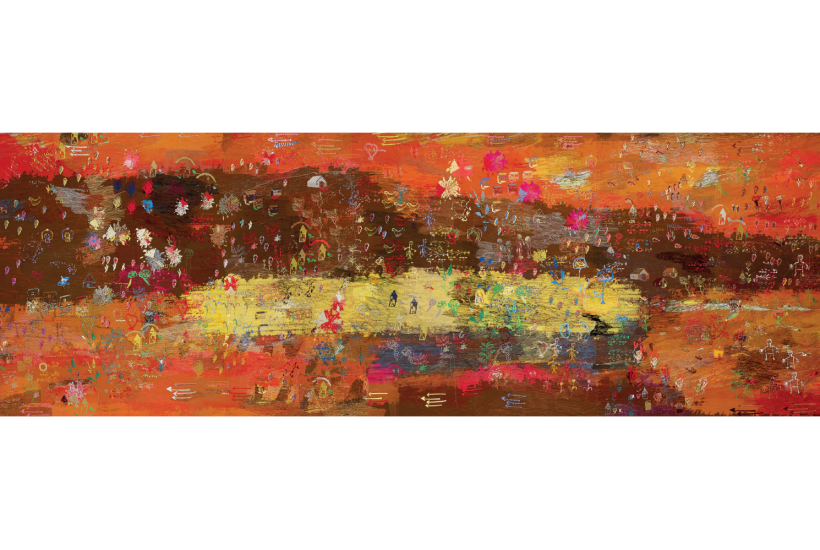


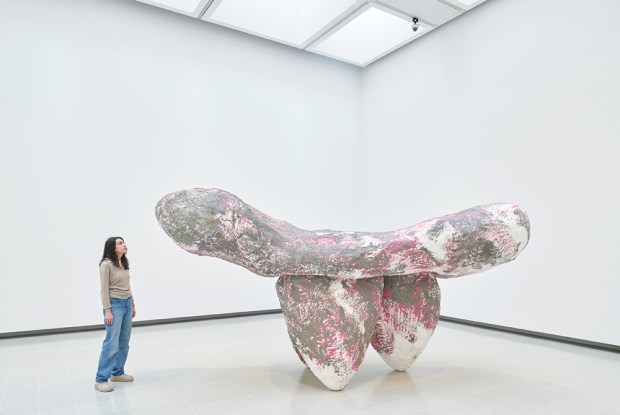
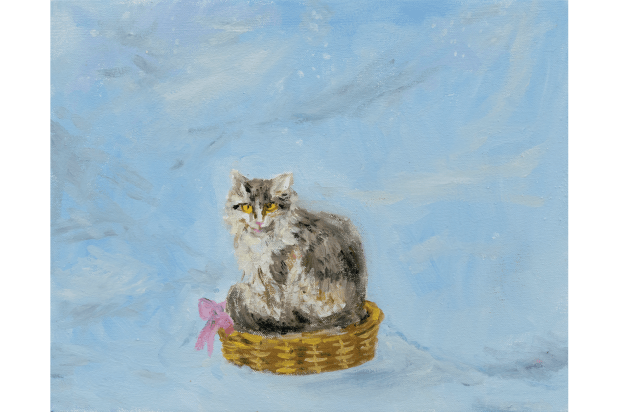
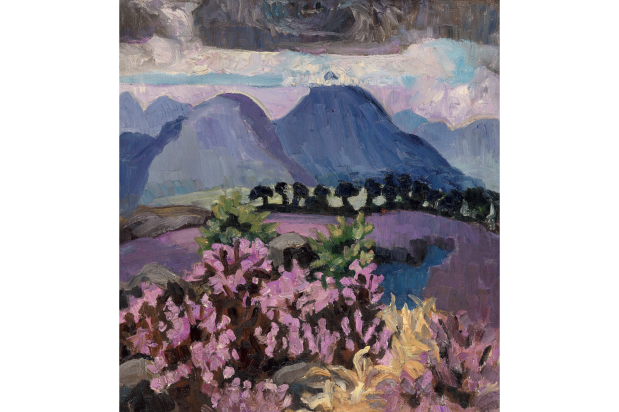
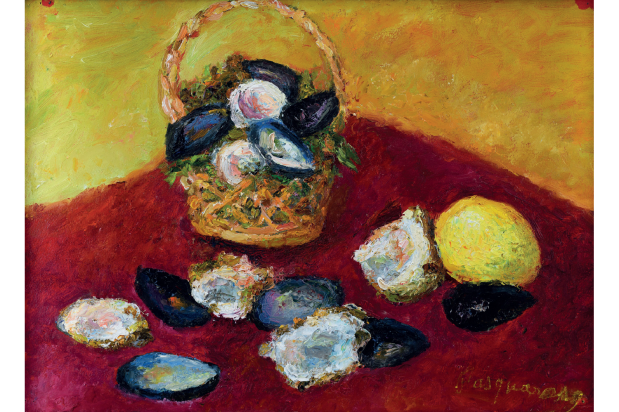






Comments
Don't miss out
Join the conversation with other Spectator Australia readers. Subscribe to leave a comment.
SUBSCRIBEAlready a subscriber? Log in